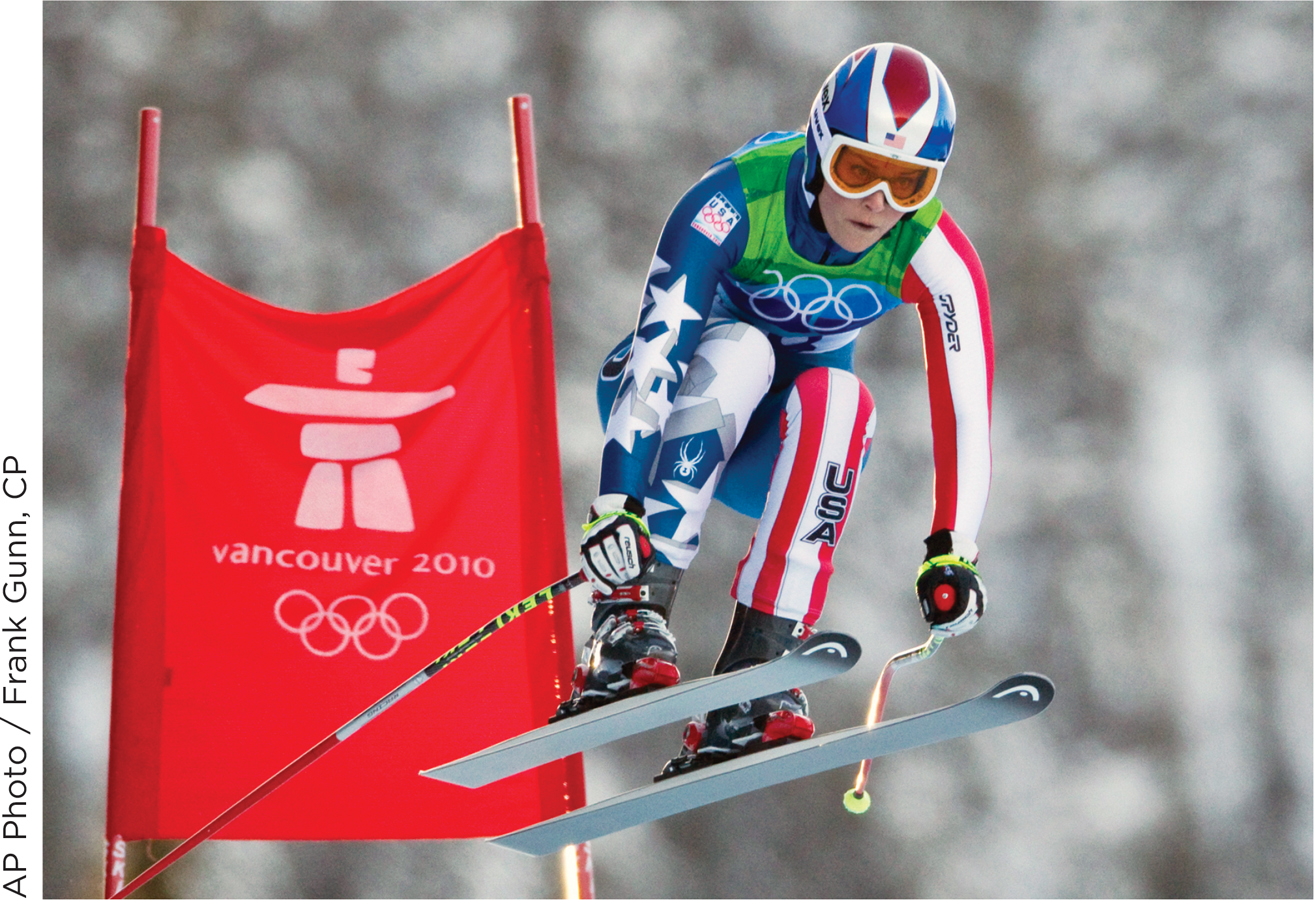5.8 Sensation and Perception in a Social World
Now that you’ve learned about each of the six perceptual systems, let’s look at three examples in which social factors shape perceptual experience. The first is the experience of pain.
The Experience of Pain
Preview Question
Question
 What explains pain?
What explains pain?
Pain is a signal. It tells you that something is wrong: Some part of your body has been, or is being, damaged. The experience of pain alerts an organism to the existence of damage and the need to take action to protect itself from further harm.
Specialized cells, called nociceptors, are the body’s pain receptors; they send electrical signals to the brain when activated by harmful stimuli, such as a cut or burn (Apkarian et al., 2005). Nociceptors send signals of two types: fast and slow. The fast signals produce the sudden, sharp pain you experience when injured, whereas the slow signals produce the prolonged, dull pain that lingers after an injury.
Pain sensation might sound purely biological: Activate some nociceptors and you feel pain. But consider the case of Lewis Coulbert, a British soldier in Afghanistan. A bullet struck him in the arm when his platoon came under attack from the Taliban. The bullet surely activated plenty of nociceptors, yet, in the midst of the fighting, he didn’t even realize he had been shot. “It was not until the end of the contact that I noticed my arm was covered in blood,” said Coulbert, who reported that he “pulled out the bullet … and carried on” (Crick, 2009).
Have you had an experience similar to the soldier’s? What “high-

The case is heroic, but not unique. The experience of pain is determined by not only physical factors, but also social and psychological influences. A classic theory explains how this works. According to the gate control theory of pain (Melzack & Wall, 1965), the spinal cord contains a biological mechanism that acts like a gate. Sometimes it is open, letting pain signals through to the brain, but sometimes it is closed. When it’s closed, pain signals cannot get past the spinal cord to the brain and, as a result, people do not experience pain when nociceptors fire. A critical insight of the theory is that thinking processes—
Knowledge about the brain has advanced dramatically in the decades since the gate control theory was proposed. Yet the theory has held up well. Contemporary findings confirm that people experience different levels of pain in different social contexts, and neural pathways running from the brain down to the spinal cord are responsible for this influence of social settings on pain perception (Fitzgerald, 2010).
The experience of pain also is influenced by biochemicals known as endorphins (Sprouse-
203
WHAT DO YOU KNOW?…
Question 18
1UtdBbHxqlYtrxy52GsOPbJNilXnuX0k7SRJPwoJQ8baDaC0t4vKyxYsSOwQ+YCHHj5HQCBSwSGY7x6LPgpg+ww+SOOaf2/e9PprWWaIdyFXZpBkPzsaEjJcOLdhF6cGYZ58g/x3roTpYNfngOKm+7SZFqtHcmjOz5tZdzYsKJ4=The Perception of Faces
Preview Question
Question
 Why are we so good at recognizing faces?
Why are we so good at recognizing faces?
If you played with a cat for 10 minutes and, at some point in the future, were shown 10 cats—
People are extraordinarily good at facial recognition. We can recognize—
Where did this ability originate? From an evolutionary perspective, it would be costly not to recognize people—
Much evidence suggests that evolution also has provided a specific neural mechanism that is devoted to the processing of faces. A region of the brain known as the fusiform gyrus (Figure 5.46) is active when people look at human faces, and more active during face-

Humans’ ability to detect faces is apparent from the beginning of life. In research, newborns have been shown cartoon images of either normal faces or faces in which the features have been scrambled (e.g., a cartoon with an eye where the mouth should be). Newborns pay more attention to the normal faces, which suggests that they are biologically inclined to perceive faces (McKone, Crookes, & Kanwisher, 2009).
WHAT DO YOU KNOW?…
Question 19
Humans’ excellent ability to recognize faces was likely shaped by natural xVT6Y0Bs31AdAqAYlyHtOg==.
Motivated Perception
Preview Question
Question
 Does motivation—
Does motivation—
204

Throughout this chapter, we have discussed what people perceive, but not what they want to perceive. Let’s now look at the influence of motivations on perceptions.
Initial evidence that a person’s motivations can influence his or her perceptions came from a study in which children estimated the size of either of two objects: (1) coins or (2) cardboard disks of the same size as coins (Bruner & Goodman, 1947). The children judged that the coins—
More recent evidence of motivational influences comes from a study featuring a simple task: estimating the size of a glass of water (Veltkamp, Aarts, & Custers, 2008). The researchers measured the length of time since each participant had last consumed a beverage. Long times meant a higher motivation to drink. The researchers also showed, to some participants, a computer screen on which the words “drinking” and “thirst” appeared extremely briefly—
If small change and low levels of thirst can have these effects, more powerful motives—
WHAT DO YOU KNOW?…
Question 20
Our current 5ZQ9dq8WP9fgzDAFUe/rpXiXDjY= (e.g., for money or for water) can shape our perceptions.